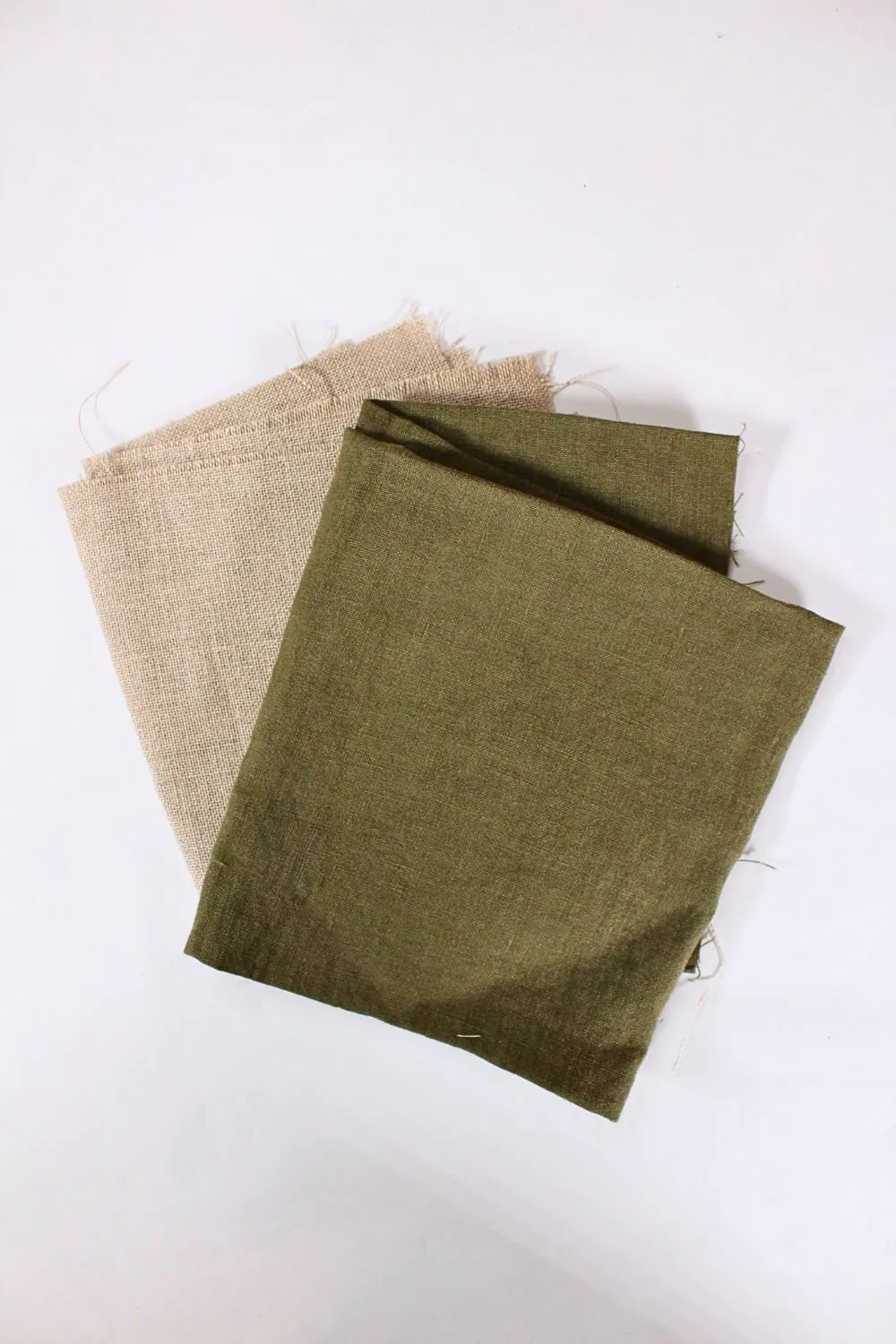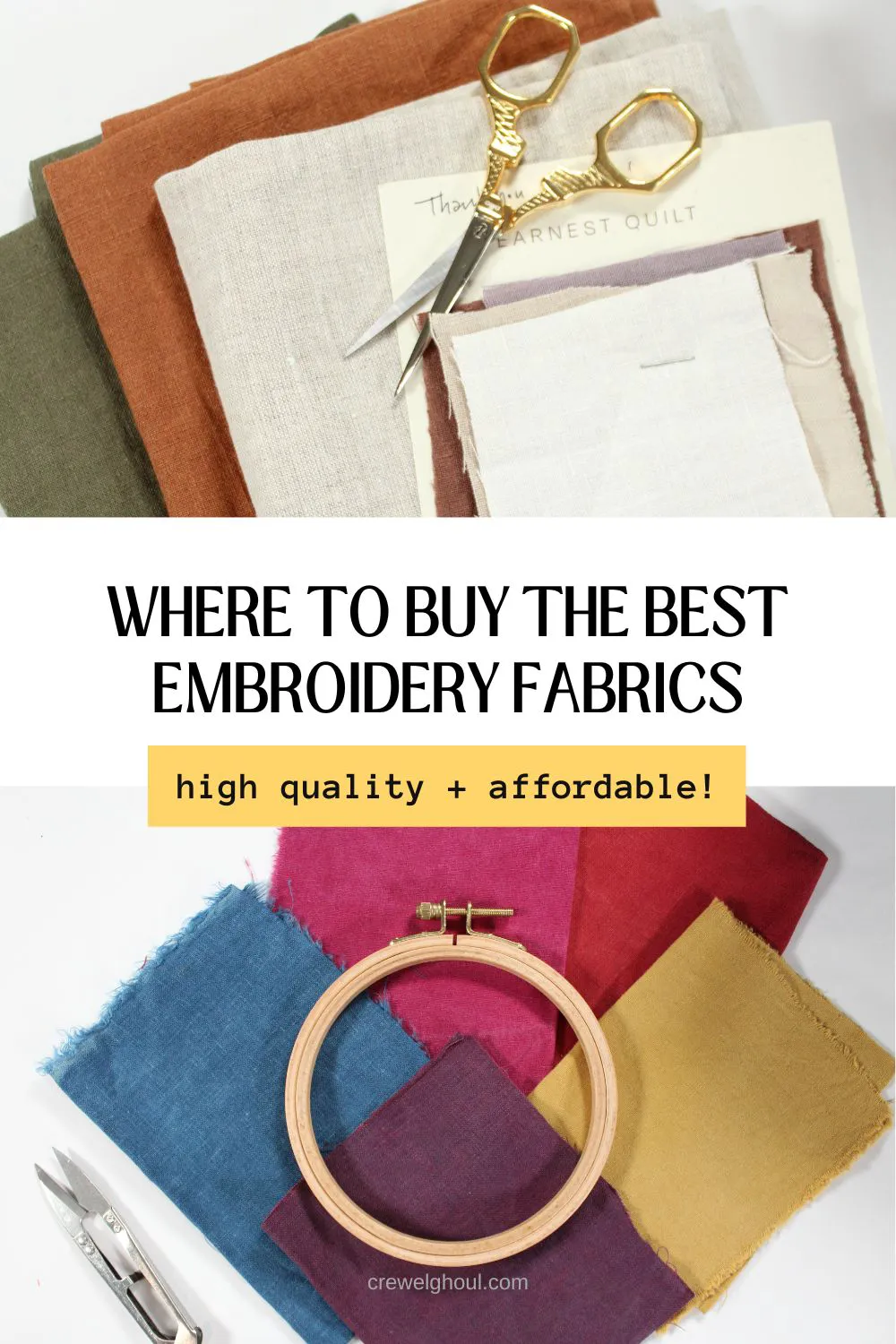The Best Fabrics for Crewel Embroidery: A Comprehensive Guide
Choosing the Perfect Fabric: A Guide to Crewel Embroidery Materials
Choosing the Perfect Fabric: A Guide to Crewel Embroidery Materials
FAQs
What is the easiest fabric to embroider on?
Linen and cotton are great beginner friendly options due to their even weave and durability.
Is polyester good for embroidery?
Polyester is not an ideal fabric to use – it’s a synthetic fabric that is slippery, prone to puckering, and has an extremely tight weave to it.
Is Kona Cotton good for embroidery?
Yes! It’s affordable, smooth, and holds embroidery stitches well. It comes in a wide variety of colors, making it a popular choice for embroiderers.
Is felt good for embroidery?
Felt works well for hand embroidery, but it’s best for appliqué style embroidery rather than more intricate surface embroidery
What thread count is best for hand embroidery?
Fabrics with a thread count of 32 and up are best for surface embroidery, while lower thread counts (e.g. 14-count Aida) are great for cross stitch.
Best Types Of Fabric For Hand Embroidery
Choosing the right fabric for an embroidery project is one of the most important decisions you’ll make. The fabric you use can either hinder your progress or take your embroidery to the next level.
I know it can be really confusing and frustrating to find the perfect fabric. I’ve stitched on plenty of materials that were less than ideal! In this guide, I’ll walk you through the best embroidery fabrics, key factors to consider when choosing fabric, and some helpful shopping tips to make your decision easier.
This post is part of my hand embroidery supplies series.
Disclaimer: This post contains affiliate links, which means I may earn a small commission if you choose to purchase an item.
What Makes Crewel Embroidery Different?
It's difficult to know the full history of crewel work, but it dates back to Medieval times, if not earlier. Perhaps the oldest and most well-known piece of crewel is the Bayeux Tapestry, which is nearly one thousand years old. It was made in England and given to France.
Crewel rose in prominence in Jacobean England during the 16th and 17th centuries, and because of that, traditional crewel often displays motifs popular of that era. In fact, Jacobean embroidery is a style in itself, but it's also usually crewelwork.
Fast forward to the 1970s, and this embroidery style made a huge comeback. The pieces of this era featured bold colors and giant flowers, and fun phrases like "God Bless Our Pad." You could even find kits for stitching your favorite childhood characters.
Crewel embroidery continues to evolve and you can find designs and kits with modern patterns, and a wider variety of materials. One thing remains—crewel wool thread.
Fabrics To Look Out For At Chain Craft Stores
If you’re in a pinch and you can’t wait for an online shipment to arrive, you can find a variety of high quality fabrics at crafts stores like Joann’s and Hobby Lobby.
The one thing you’ll notice through this entire article is that all of the fabrics featured are natural fabrics that are made up of linen and cotton. These are by far the best types of fabrics to stick with, so that’s what I try to purchase at craft stores.
Just beware: a lot of craft stores that sell fabric by the yard have cotton and linen blends that contain synthetic materials in them such as rayon or elastic. These are not as nice to stitch on, so I’d steer clear of them. Make sure the label says “100% linen” or “100% cotton” on it!
Kona Cotton
This brand of fabric is widely available at most chain craft stores and on Amazon. It’s made up of 100% cotton and it’s a nice weight for needlecraft projects. I like it because it comes in a large variety of colors and it’s very affordable to purchase by the yard.
Zweigert Even Weave and Aida
If you look at the packaging, some craft stores may sell needlecraft fabric under their generic craft supply name. (i.e. Artiste is Hobby Lobby’s) But underneath it, there may be more details about the type of fabric it is. Zweigert is a German brand of fabric that’s been around for over 100 years. They manufacture many linen and cotton fabrics that are generally great for embroidery.
Depending on the type of project you’re doing, most of these fabrics come in a variety of different thread counts. The Aida is great for counted cross stitch and the even weave is great for both cross stitch and surface embroidery projects.
Tip: If you’re doing a surface embroidery project on the even weave, you may want to select a higher thread count so the weave of fabric is tighter.



Tegs:
Search
Recent Posts
-
Sewing Stretch Fabric Made Easy: Choosing the Right Needles
Apr 14 2025
-
Exploring Stretchy Knit Fabrics: A Comprehensive Guide
Apr 14 2025
-
Explore the Beauty of Broken Twill: Fabric Properties and Applications
Apr 15 2025
-
Learn about the best fabrics for beginners to start their embroidery journey.
Apr 18 2025
Subscribe to Updates
Get the latest posts and fashion insights directly in your inbox.